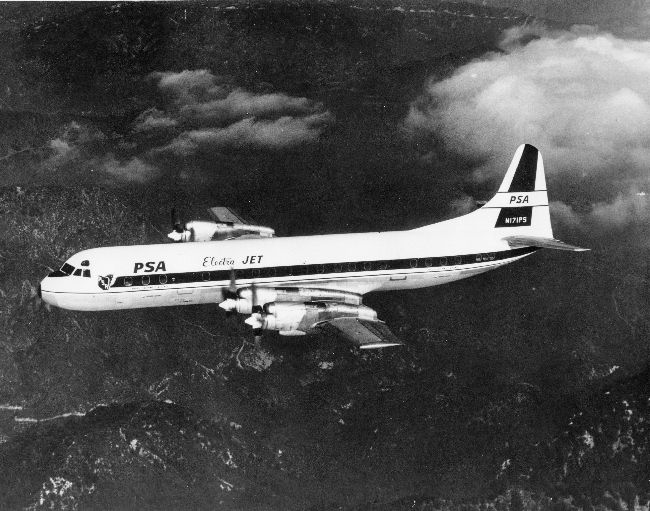Progress will begin once any wreckage is found, particularly if that includes structural components like wing spars. Structural parts and engines can help explain how the plane met the water: flat in a stall, nose down in a powerless dive, or gliding as if under control.
One historical reminder that it's possible to solve profound aeronautical mysteries even without a "black box" DFDR is in this photo (credit, AFP):
It's the plane in the background: A P3 Orion operated by the Japanese Maritime Self-Defense Force, the airframe of which is based on the Lockheed L-188 Electra, an airliner of the late 1950s (photo, Wiki Commons):
Early in its life as an airliner, the Electra presented a serious problem, two mysterious, mid-air airline disasters: one over Texas, and one over Indiana. As wings broke away and the airplanes fell to earth, the engines produced an eerie howl that bystanders described as unearthly.
Work was hamstrung by the lack of flight data recorders on such aircraft. Result: the initial theories couldn't account for the full combination of the few facts that were known.
But in time, study turned up the major causes behind it: propeller rotation that could resonate with the wing-bending frequency, and seemingly minor damage to engine mounts before the flights in question. The engine-mount damage had allowed the big propeller just enough wiggle room for the problem to catch hold.
After some pretty daring flight testing, Lockheed confirmed a set of solutions to what became known as whirl-mode flutter.
Here's a film of Electra tests at Langley:
Here's a snippet from a feature on flutter from Air&Space, "The Hammer," by Peter Garrison:
"As early as 1938, a study on powerplant vibrations had raised the possibility of propeller whirl inducing structural flutter. But the relative weights of engines and propellers, the stiffness of propeller shafts, and the engine power outputs that were typical in the late 1930s made it a practical impossibility. As Lockheed mathematician Robert Donham, who participated in the accident investigation, says today, 'Probably nobody involved with the design of the Electra even knew the paper existed. Nobody thought about whirl-mode vibrations causing flutter.'
"Lockheed's flutter analysts reprogrammed their computer to include whirl mode, and the mechanism of the accidents began to emerge. By an unlucky coincidence, the whirl-mode frequency of the Electra's big four-blade propellers happened to match the flapping frequency of the wing. The propellers, like the child driving a swing higher by small movements of her body, had eventually caused the wing to flap so violently that in 30 seconds it broke at the root without the propeller whirl ever overloading the nacelle structures.
"Microscopic examination of fractures in
the wreckage of the two airplanes revealed engine mount damage that
had preceded the inflight breakups. The cause of the earlier damage
was uncertain--in one case a hard landing was suspected--but Lockheed
redesigned the engine mounts and no Electra ever suffered from
whirl-mode flutter again."
As did the catastrophic in-flight breakup of two Comet airliners in early 1954 over the Mediterranean, the troublesome beginnings of the Lockheed Electra L-188 proved the need for flight recorders. While both investigations eventually succeeded without such data, had good information been available right away from flight recorders, the later crashes might have been avoided. In short, time is of the essence.





